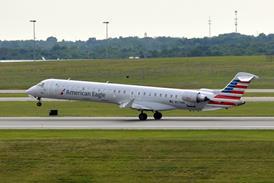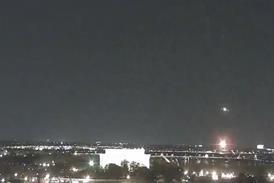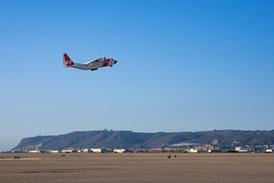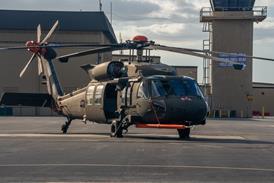GRAHAM WARWICK / WASHINGTON DC
Environmental Tectonics claims centrifuge-based TFS outstrips current fighter capability
A centrifuge-based flight simulator which combines high-g and tactical training is nearing completion at Environmental Tectonics (ETC). The US company believes its sustained-g tactical flight simulator (TFS) will provide higher fidelity training for fighter pilots than traditional fixed-based dome simulators.
ETC, based in Southampton, Pennsylvania, is a leading manufacturer of centrifuges for aeromedical applications. It has produced G-LAB devices for spatial disorientation training, and G-FET dynamic flight simulators for high-g training of fighter pilots. The G-FET II TFS is an evolution of the latter device.
The hydraulic motion bases on conventional flight simulators give only transient, low-g motion cues. As a result, most fighter simulators are fixed-based devices relying on wide-angle, high-resolution visual systems to provide motion cues. The inability to simulate high sustained g and high g-onset rates results in negative training, says ETC vice-president Dick Leland.
The TFS has a high-fidelity cockpit, with visual system, mounted in a gimballed gondola on the end of a 7.6m- (25ft) long rotating arm. The centrifuge-based device generates a maximum of 25g and g-onset rates up to 15g/s. This is well beyond the capability of today's fighters, which are limited to a sustained 9g, with onset rates up to 9g/s, by the pilot's g tolerance.
ETC's G-LABs are already used to assess and improve g tolerance by exposing pilots to sustained high g and teaching them anti-g straining techniques. The G-FET adds the ability to move the gondola independently of the arm and allows "g-pointing" - aligning the g vector as in a manoeuvring aircraft. "We can stress the pilot as in the air," says Leland, allowing simulator training to be substituted for flying.
In addition to a number of G-LABs in service worldwide, there are three G-FETs in Japan, Singapore and the USA. These are already used to train fighter pilots in recovery from unusual attitudes and departure from controlled flight, which are too risky to be performed in the aircraft and cannot be simulated otherwise, says Leland. The G-FET II adds high-fidelity aircraft and environment simulations, allowing the device to be used for tactical flight training.
ETC expects to complete its first TFS within three to six months and Leland says several countries have expressed interest in the device, which will be offered with interchangeable cockpit modules, designed to simulate different fighter types. When not in the centrifuge, the modules can be plugged into docking stations and used as stand-alone or networked fixed-base simulators, he says.
Source: Flight International























